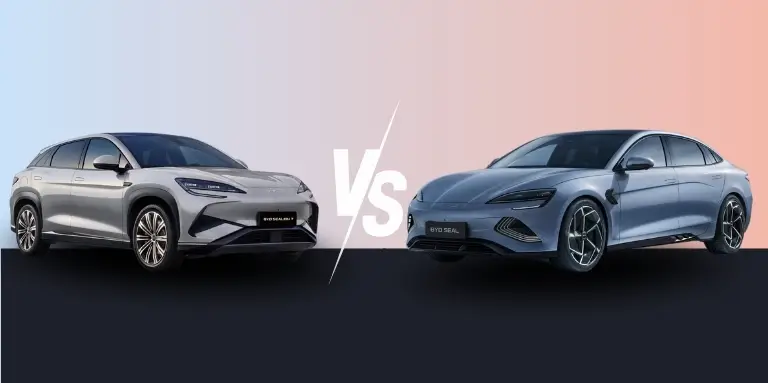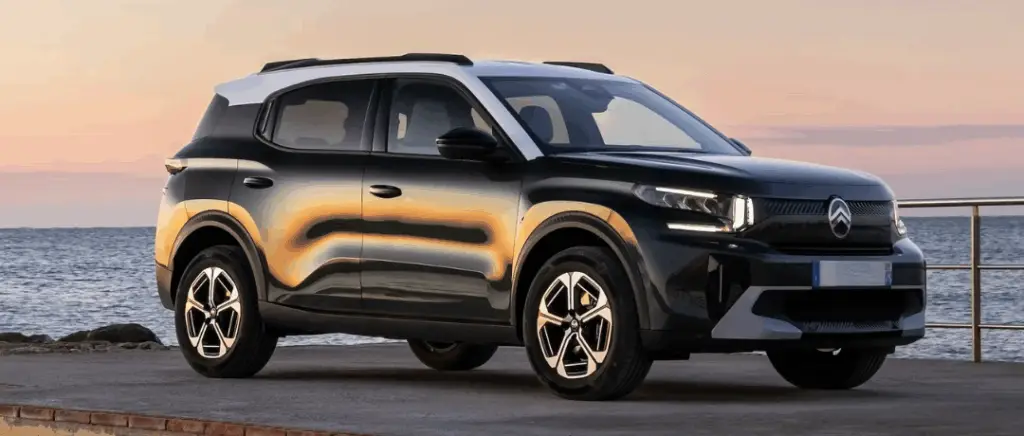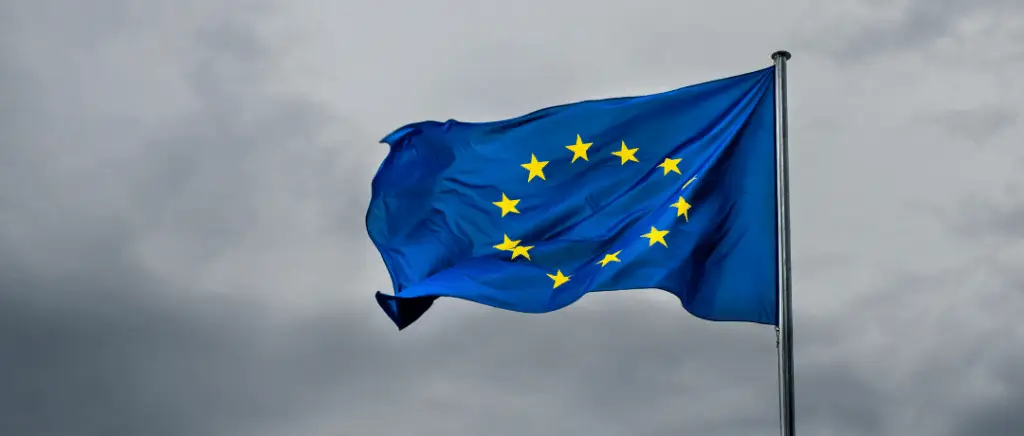Performance and autonomy BYD Sealion 7 or BYD Seal, which is the most dynamic?
Engines and acceleration: how good are the BYD Sealion 7 and BYD Seal on the road?
La BYD Sealion 7 and the BYD Seal share a performance-oriented philosophy, but differ in their technical architecture and platform. The Sealion 7 is based on the brand new e-Platform 3.0 Evo platform, which introduces a 'Cell-to-Chassis' (CTC) design: the cells of the battery are integrated directly into the chassis, improving rigidity, space efficiency and safety.
This platform makes it possible to offer a range of powertrains from rear-wheel drive (313 bhp, 0 to 100 km/h in 6.7 s) to all-wheel drive (530 bhp, 0 to 100 km/h in 4.5 s), with acceleration worthy of a sporty SUV. The BYD Seal is based on the e-Platform 3.0 platform, also dedicated to electric vehicles, with a cell-to-body structure that integrates the battery into the chassis to optimise weight and safety. It is available in two versions: a rear-wheel drive version with 313 bhp (0 to 100 km/h in 5.9 s) and an all-wheel drive version with 530 bhp (0 to 100 km/h in 3.8 s), offering dynamic handling and excellent roadholding.
On the road, the Sealion 7 impresses with its power and versatility, while the Seal stands out for its agility and efficiency, each model taking full advantage of its platform to maximise performance and safety.
Autonomy and recharging: what are the differences between the BYD Sealion 7 and the BYD Seal in everyday use?
In everyday use, the differences in range and recharging between the BYD Sealion 7 and the BYD Seal are largely due to their respective platforms and battery capacities. The Sealion 7, thanks to the e-Platform 3.0 Evo platform and CTC technology, offers LFP batteries ranging from 82.5 to 91.3 kWh depending on the version, with a range of 456 to 502 km WLTP for the all-wheel drive versions and up to 482 km for the rear-wheel drive version.
It features rapid charging of up to 230 kW DC on the Excellence version, enabling the vehicle to go from 10 to 80 % in just 24 minutes, and also offers V2L bidirectional charging. The BYD Seal, built on the e-Platform 3.0 platform with a cell-to-body structure, is equipped with an 82 kWh LFP battery and boasts a range of 520 to 570 km WLTP depending on the engine, with fast charging of up to 150 kW (approximately 37 minutes from 10 to 80 %).
On a day-to-day basis, the Sealion 7 offers faster recharging on its top-of-the-range versions and greater versatility thanks to its more recent platform, while the Seal stands out for its greater range and optimised efficiency thanks to its structure. aerodynamics and its platform dedicated to electric saloon cars.
Design, comfort and habitability: two philosophies between BYD Sealion 7 and BYD Seal
Exterior and interior design: BYD Sealion 7 or BYD Seal, which offers the most accomplished style?
La BYD Sealion 7based on the e-Platform 3.0 Evo platform, boasts an ocean-inspired exterior design with flowing lines, a striking X-shaped structure at the front and dynamic teardrop-shaped rear lights, creating a sporty, modern silhouette for a family SUV. Its fastback profile and long wheelbase reinforce its elegant appearance and presence on the road. Inside, the Sealion 7 boasts a two-tier centre console, high-quality materials (Nappa leather on certain trim levels), heated, ventilated and electrically adjustable front seats, and a dual digital display (15.6-inch swivelling centre screen and 12.3-inch instrument panel). The ambience is resolutely technological and functional, although the ergonomics favour touch-screen interaction.
For its part, the BYD Sealbased on the e-Platform 3.0 platform, has the sleek, elegant styling of a sports saloon, with taut lines and a panoramic roof that accentuate its refinement. The interior is both luxurious and ergonomic, with sports seats in Nappa leather, a premium Dynaudio 12-speaker audio system, intelligent storage compartments and meticulous attention to detail. The on-board experience is immersive thanks to a head-up display, a large rotating touchscreen and a sophisticated lighting ambience. The Seal therefore stands out for its more upmarket approach and an interior design focused on comfort and on-board technology. In short, the Sealion 7 seduces with its dynamic styling and family versatility, while the Seal offers superior refinement and sophistication, particularly appreciated in the electric saloon segment.
Onboard space and comfort: is the BYD Sealion 7 more welcoming than the BYD Seal?
La BYD Sealion 7Thanks to its e-Platform 3.0 Evo platform and SUV size (4.80 m long, 2.93 m wheelbase), it offers particularly generous on-board space. At the rear, passengers benefit from a flat floor, excellent headroom and comfortable seats, even for long journeys. The 520-litre boot (up to 1,789 litres with the seats folded down) and 58-litre frunk make it one of the most practical models in its class for families or travellers. Modularity, plenty of storage space and high quality seating (heated and ventilated seats, electrically adjustable) all add to its everyday practicality.
La BYD Sealdespite a similar wheelbase (2.92 m), remains a saloon and offers comfortable rear space, albeit less modular and less voluminous than an SUV. Its 402-litre boot, supplemented by 53 litres of front storage space, meets the needs of a typical family, but does not rival the capacity of the Sealion 7. The emphasis is on the comfort of the seats, ergonomics and the quality of the materials, offering a refined and pleasant atmosphere, ideal for long journeys or daily commutes.
In short, the Sealion 7 is much more welcoming in terms of space and modularity thanks to its SUV platform, while the Seal focuses on comfort and luxury in a more compact and elegant electric saloon format.
On-board technologies : BYD Sealion 7 or BYD Seal, who has the edge when it comes to innovation?
Infotainment and connectivity: BYD Sealion 7 vs BYD Seal, which on-board functions?
Both the BYD Sealion 7 and the BYD Seal focus on an advanced digital experience, but with some notable differences in ergonomics and functionality. The Sealion 7 features BYD's signature huge 15.6-inch rotating central screen, which can be switched between landscape and portrait format, although the latter is rarely used in practice. The quality and responsiveness of the screen are commendable, but the ergonomics of the menus and navigation through the functions (such as activating the heated seats) sometimes require several manipulations, which can detract from the user experience.
Fortunately, OTA updates are planned to improve the interface, including shortcuts for the main functions and touch gestures for adjusting the climate control. Wireless Android Auto and Apple CarPlay compatibility are standard, as is an integrated app store, albeit limited in terms of applications. The fixed 10.25-inch digital instrument cluster lacks customisation, but is still easy to read, and a head-up display completes the package on top-of-the-range models.
The BYD Seal offers a similar configuration, with a large central touchscreen, Android Auto/Apple CarPlay compatibility and digital meters. Ergonomics are generally considered to be more intuitive and the layout more streamlined, making it easier to get to grips with on a day-to-day basis. Both models benefit from comprehensive connectivity and a modern interface, but the Sealion 7 still needs to perfect certain aspects of its infotainment system to rival the Seal's ease of use.
Driving aids and safety: what do the BYD Sealion 7 and BYD Seal offer to help you drive with peace of mind?
The BYD Sealion 7 and BYD Seal are both equipped with a comprehensive arsenal of driving aids and safety features, taking advantage of their modern platforms to offer a serene driving experience. Both models offer the main advanced systems as standard or as an option: adaptive cruise control, active lane keeping, autonomous emergency braking, traffic sign recognition, blind spot monitoring and rear traffic alert. The head-up display, available on top-of-the-range versions, enhances safety by projecting essential information into the driver's field of vision.
The Sealion 7, thanks to its recent e-Platform 3.0 Evo platform, benefits from a reinforced structure and state-of-the-art safety technologies, while the Seal, on e-Platform 3.0, already offers excellent levels of protection and assistance. Both vehicles are designed to meet the needs of families and demanding drivers, with a high level of active and passive safety for all occupants.
Value for money: should you choose the BYD Sealion 7 or the BYD Seal?
Standard equipment, options and warranties: is the BYD Seal more competitive than the BYD Sealion 7?
La BYD Seal and the BYD Sealion 7 both offer very comprehensive standard equipment packages, but with some nuances depending on the trim level and philosophy of each model. The Sealion 7, Comfort version (entry-level)includes a 15.6-inch rotating touchscreena 10.25-inch digital instrument panelThe car's standard equipment includes a front air conditioning system, wireless smartphone charging, Android Auto and Apple CarPlay compatibility, dual-zone climate control, heated, ventilated and electrically adjustable front seats, a 12-speaker Dynaudio audio system, 360° camera, adaptive cruise control, road sign recognition, blind spot detection, ambient lighting and an electric tailgate.
Higher trim levels add features such as Nappa leather, head-up display and larger wheels.
The Seal, from the Design version upwards, also offers a panoramic roof, leather seats, the Android Auto/Apple CarPlay compatibility, navigation, wireless charging, 360° cameraand a top-of-the-range audio system. Both models offer V2L (Vehicle-to-Load) technology, OTA updates and a full arsenal of driving aids. In terms of warranties, the Seal comes with a manufacturer's warranty of 6 years or 150,000 km, with 8 years or 200,000 km on the battery and engine, putting it above the market average. The Sealion 7 offers similar warranties, which makes them both competitive, but the Seal stands out for its extensive range of equipment on the entry-level version and its particularly reassuring warranty.
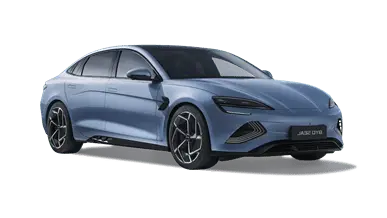
VS
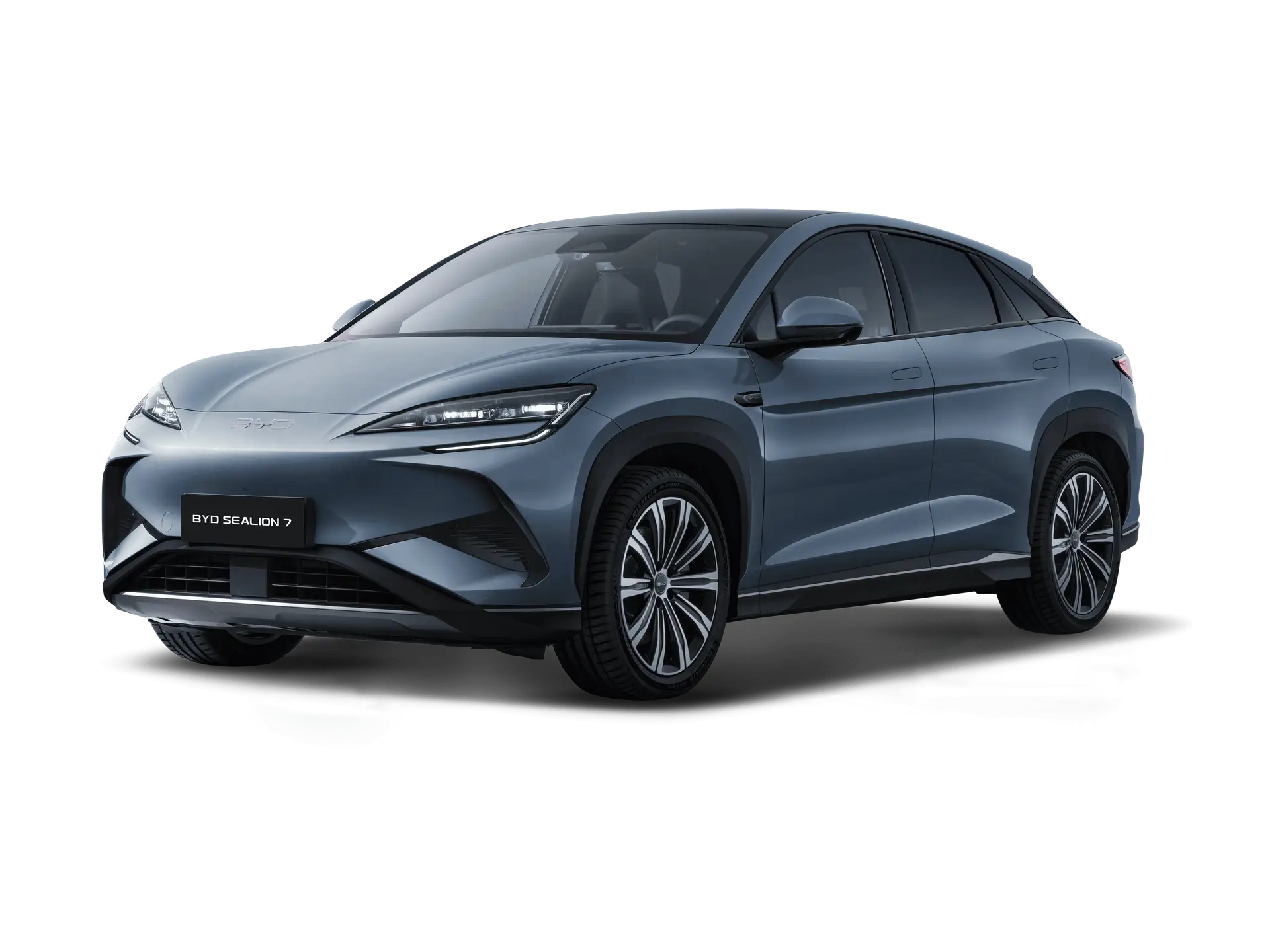
Compare the BYD Seal vs BYD Sealion 7 in our electric car comparison tool
Purchase price and overall cost: which is the better investment between the BYD Sealion 7 and the BYD Seal?
The two models have very similar starting prices. The BYD Seal starts at €46,990 for the Design rear-wheel drive version (313 bhp) and €49,990 for the Excellence AWD version (530 bhp).. La Sealion 7 also starts at €46,990 in Comfort version (313 bhp rear-wheel drive)., 51,990 for Design AWD (530 bhp) and €56,490 for Excellence AWD with the large battery pack. In terms of overall cost, the Sealion 7, as an SUV, offers superior space and versatility, which may justify a slightly higher investment for families or those looking for modularity.
La Sealon the other hand is more efficientproposes greater range (up to 570 km WLTP compared with 502 km for the Sealion 7) and potentially lower running costs thanks to its saloon format and lower fuel consumption.
Both models come with a plethora of standard equipment, limiting the need for optional extras and making their price/performance ratio highly competitive. In short, the Sealion 7 will be the best investment for those who prefer space, versatility and a raised driving position.while the Seal will win you over with its efficiency, autonomy and top-of-the-range equipment at a contained price.
Test Drive BYD Seal Excellence AWD
Comparison table: BYD Sealion 7 vs BYD Seal at a glance
| Features | BYD Sealion 7 | BYD Seal |
|---|---|---|
| Type | Electric family SUV | Electric saloon |
| Platform | e-Platform 3.0 Evo (Cell-to-Chassis) | e-Platform 3.0 (Cell-to-Body) |
| Engines | Rear-wheel drive (313 bhp) / AWD (530 bhp) | Rear-wheel drive (313 bhp) / AWD (530 bhp) |
| 0 to 100 km/h | 6.7 s (rear-wheel drive) / 4.5 s (AWD) | 5.9 s (rear-wheel drive) / 3.8 s (AWD) |
| Battery | 82.5 kWh (Comfort/Design), 91.3 kWh (Excellence) | 82 kWh LFP |
| WLTP range | 456-502 km depending on version | 520-570 km depending on version |
| Max DC Recharge | 150 kW (82.5 kWh) / 230 kW (91.3 kWh) | 150 kW |
| Recharge time 10-80% | 24-32 min depending on version | ~37 min |
| Dimensions (L x W x H) | 4.83 m x 1.92 m x 1.62 m | 4.80 m x 1.88 m x 1.46 m |
| Wheelbase | 2,93 m | 2,92 m |
| Trunk (rear/frunk) | 520 l / 58 l | 402 l / 53 l |
| Standard equipment | 15.6" screen, heated/ventilated seats, V2L, ADAS, premium audio, head-up display (depending on trim level) | Central screen, leather seats, V2L, ADAS, premium audio, head-up display (depending on trim level) |
| Connectivity | Android Auto/Apple CarPlay wireless, OTA | Android Auto/Apple CarPlay wireless, OTA |
| Starting price (France) | 46,990 (Comfort) | 46,990 (Design) |
| Highlights | Space, modularity, power, fast charging | Efficiency, range, finish, comfort |
| Weak points | High power consumption, small footprint | Smaller, less flexible trunk |
Conclusion
For everyday use, the BYD Seal is the most practical and rational choice. As a electric saloonIt combines high autonomy (up to 570 km WLTP), controlled fuel consumption and a more compact format, making it particularly well-suited to urban and suburban journeys and long journeys without the stress of recharging. Its stylish interior, driving comfort and on-board technologies make it an excellent companion for commuting, business meetings or weekend getaways. It's for people who are looking for an efficient, elegant and well-equipped vehicle for optimal everyday use.
On the other hand, if your daily routine involves more spaceand frequent family travel or the need to transport volume (children, luggage, leisure activities, etc.), the BYD Sealion 7 is more appropriate. Its Electric SUVIts generous interior space, large boot and numerous storage compartments make it an ideal solution for families or active people. What's more, its fast charging (up to 230 kW) and its raised driving position add significant comfort to everyday life.
Would you like to install a recharging point?
Beev can help you find the charging point and installer you need, at the best price.
